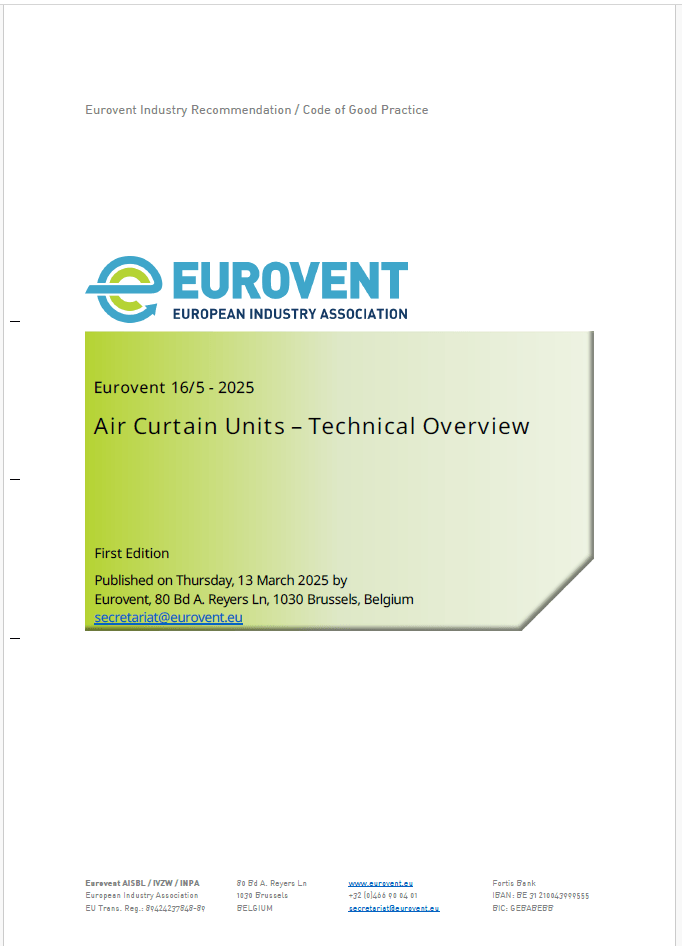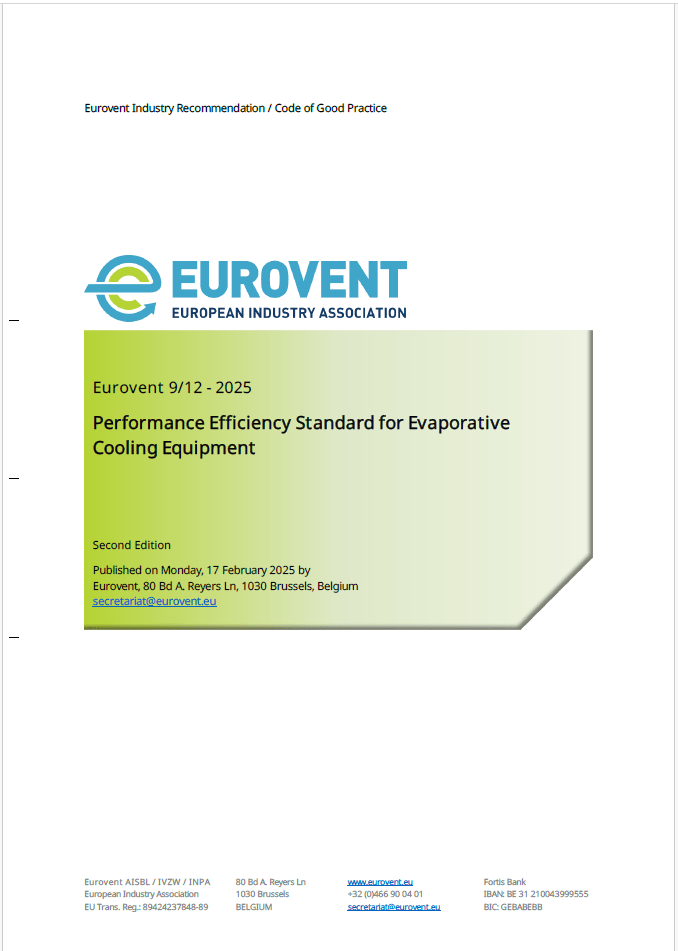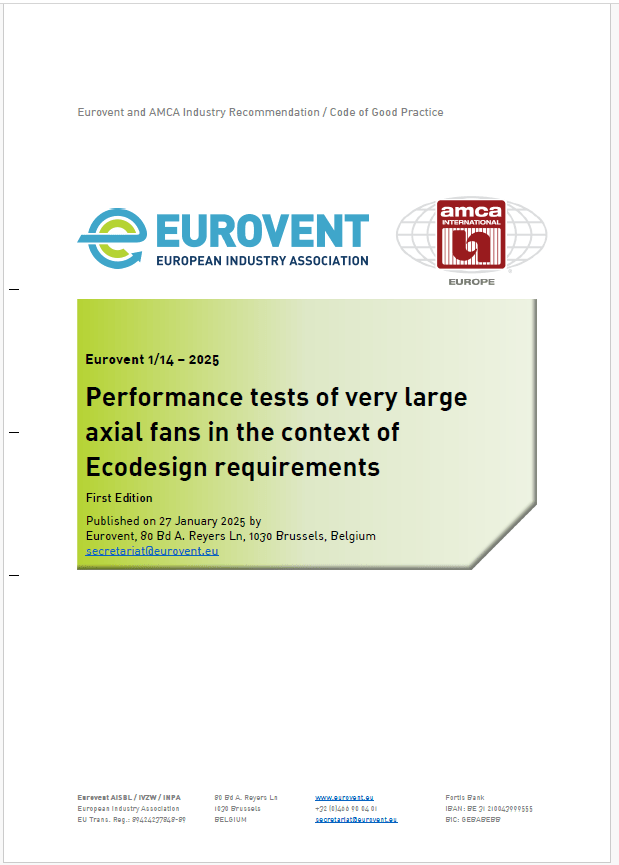Dr. Iyad Al Attar, Independent Air Filtration Expert and Associated Consultant for Eurovent Middle East, calls on the HVAC sector to challenge conventional philosophies, outlining what the industry should keep in mind to truly improve IAQ and avoid the outdated thinking that prolonged COVID-19…
It is good to get back to ‘normal’ slowly, but not back to the practices that have led to and delayed our exit from the COVID-19 pandemic. The importance of air filter performance in enhancing air quality has been belittled for decades and perceived as an acquired luxury. The pandemic finally brought the air quality narrative from the backburner to the news headlines. The scale and scope of losses in human lives and economic setbacks have scrutinised air quality and filter performance. Yet, despite all our technical know-how, knowledge, and collective experiences, we aimlessly wander in our HVAC systems, washing coils, dedusting filters, and cleaning ducts, believing that we have satisfied our air quality obligations.
It is time to get it right; we ought to focus on what is effective, not what is in fashion. We need to admit that our conventional philosophies trapped us in the pandemic and delayed our exit from it. If our literal adherence to filtration and HVAC standards has contributed to the deterioration of indoor air quality, we certainly need to check the metrics of these standards.
The pandemic is a prime time to revolt against outdated and conventional practices that have failed to protect our respiratory systems and instead participated in spreading the coronavirus. COVID-19 has now showcased compelling economic reasons for resolving air quality issues. The objective here is not just to avail the best Indoor Air Quality (IAQ) possible but to address all relevant matters influencing the built environment. HVAC systems must step up, and we should think beyond thermal comfort. That would include rewiring our buildings and cities to place IAQ at the forefront of national priorities by employing continuous aerosol monitoring and the corresponding filtration solutions.
Conventional maintenance measures thwart any endeavour to attain better air quality
Raising the bar of air quality is an engineering approach. Currently, predetermined ways of doing things and conventional practices continue to risk IAQ; the game is the same. The addiction to using washable and reusable filters has compromised any indoor air quality and filtration upgrades.
The villain in the story is the tremendous reliance on saving cost rather than lives by dedusting a clogged filter by compressed air, washing coils and cleaning dusts. These maintenance measures thwart any endeavour to attain better air quality. Therefore, it is time to bend the arc of conventional practices toward professional, thorough, and preventative maintenance programs to take air quality to the next level.
The mindset of maintenance shortcuts will never position air quality to be a pressing issue in the built environment. Underutilising air filtration technologies and settling for what we can do rather than what we must have led to the inheriting poor IAQ and contributed further to the spread of microorganisms. It is time to make filter performance the driving force of the built environment, not an accessory of the entire HVACR system.

Figure A & B: Scanning electron microscopic images of filter media used in air filters
Any cost of filtration upgrades is infinitesimal given the cost of the lockdown
To achieve leaps and bounds as far as IAQ is concerned, we must consider new ideas and adopt innovative approaches. We need to consider appropriate filter selection that can accommodate all types of pollutants once their physical and chemical characterisation has been completed. To implement proper corrective measures, we ought to highlight the air quality issues and determine whether they are ventilation or filtration issues or if it is a bit of both. For example, to lower the concentration of CO2, ventilation techniques are necessary, but both filtration and ventilation solutions can reduce Particulate Matter (PM) and gaseous pollutants concentrations.

Figure C: Typical installation of secondary stage filter ‘pocket type’ in an air handling unit
Recently, there has been a great deal of hype on moisture control, and several studies and scholars correlated humidity control and virus survivability in an indoor environment. Ironically, the sole reliance on a single stage of an inch thick washable filter in Fan Coil Units (FCU) and installing these filters before they are completely dry – not to mention their poor filter efficiency – may counterproductively affect the IAQ. Air handling units use the second stage of filtration (Pocket Filters – Figure C) in addition to the primary filters. The agony is that these secondary filters occupy tremendous space in the air handling units compared to their modest performance. Unfortunately, although these filters are disposable, maintenance teams re-stall them after attempting to regenerate them by water-washing or compressed air.
It is impossible to embark on air quality enhancements if these practices exist. There are a lot to tweak in terms of IAQ, not just to hike the filter efficiency and install High-Efficiency Particulate Arrestance (HEPA) filters, but to consider the entire HVAC systems and built-in environments holistically. Satisfaction is gained through increased productivity and levitating dull buildings through IoT. Therefore, enticing HVAC engineers to design systems that would respond to variations in indoor air quality will prove invaluable in confronting a wide array of pollutants, not just PM.
Air filter media (Figure A &B), design, and performance have advanced tremendously. Addressing only the associated rise in pressure drop when selecting air filters with higher efficiency is yesterday’s argument. The optimised performance of modern aerodynamic filter design can spark a new beginning to attain cleaner air at a much lower pressure drop.
Reimaging Air Quality
Today, existing and new buildings are subject to tremendous pressure to provide healthier indoor environments. However, any cost of filtration upgrades is infinitesimal given the cost of the lockdown. Although COVID-19 has brought immense suffering, it has highlighted the primary deficiencies in terms of the tools and conditions of our indoor environment. Globally, the pandemic pushed air quality to the centre and forced everyone to reimagine air quality given the incredible growth in industrialisation; however, at the same time, it also shed light on the lack of effective regulations. Today, technology has provided us with tools and the resources to attain the best air quality, and now the pandemic has given us the business case to act swiftly.
We must unweave every strand of conventional practice that led to the spread of the virus. We ought to admit that maintenance programs in place are, at best, modest, if they exist at all. It is time to certify HVAC systems, air filter performance, and maintenance programs and teams to take air quality to the next level.
It is now time for the global government to legislate rules and regulations that match the importance of outdoor and indoor air quality and allocate budgets and plans to improve IAQ. The bill that can come due is horrendous if we do not make air quality a global priority.



















